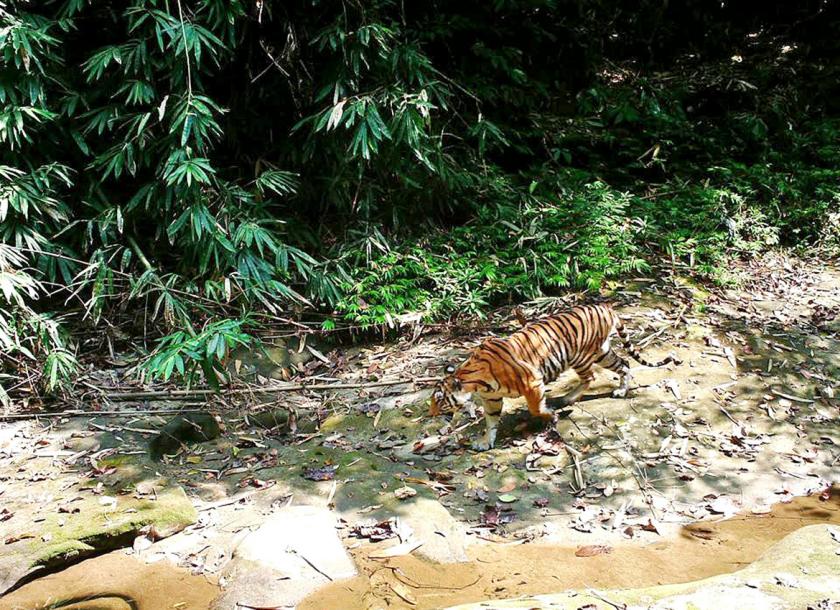
Conservationists work hard to capture camera trap footage of wild tigers in Southeast Asia, whereas a farmer in Sagaing region has probably seen enough of them.
Three dogs owned by the man were fighting a tiger on his farm on January 13 in Kani township, which crosses into Alaungdaw Kathapa National Park.
The farmer entered the melee and was bitten on his head and arms by the tiger, said Sagaing region parliamentarian Htun Htun Win, who was told of the incident by the man’s neighbour.
He stabbed the tiger three times before it ran back into the forest, said Htun Htun Win, adding that the farmer is recovering in Monywa General Hospital.
“The tigers aren’t necessarily a problem in my district, they live by themselves,” Htun Htun Win told Myanmar Mix. “But because of deforestation, many of the tigers are losing their homes, so some, in the search for food, may come close to the village outskirts."
At least one tiger had been getting into the farmer’s crops for the past few weeks, said the politician, but there were no plans to track down the animal.
"We can't kill or catch the tiger because it wouldn't be fair to them, would it?” he said. “I guess we would have to leave them alone."
Alaungdaw Kathapa National Park—the oldest and largest reserve in Myanmar, according to nature conservation group Global Conservation—has some of the biggest tracts of natural teak forest in the country.
The last tiger attack on a human in the area was about 10 years ago, said Htun Htun Win. One of the last recorded attacks in Myanmar was four years ago in Karen state, when a tiger that attacked two fishermen was hunted and killed by local authorities.
Once so abundant in Myanmar that it was considered a pest, tigers are now endangered and protected under law after being hunted to the brink of extirpation.
The Myanmar government estimates at least 22 tigers are left in the country, although only eight percent of potential tiger habitat across the nation between 2016 and 2018 was covered in the survey—partly due to armed conflict.

